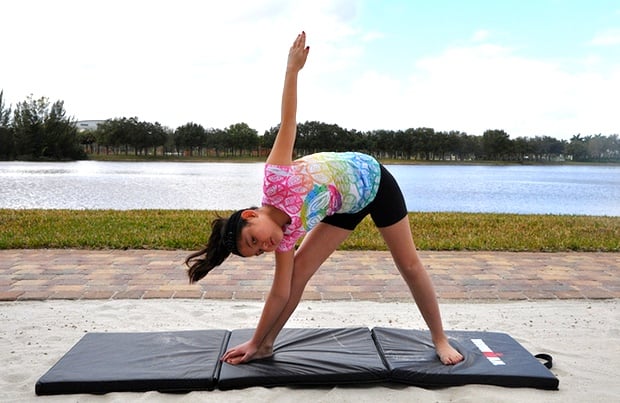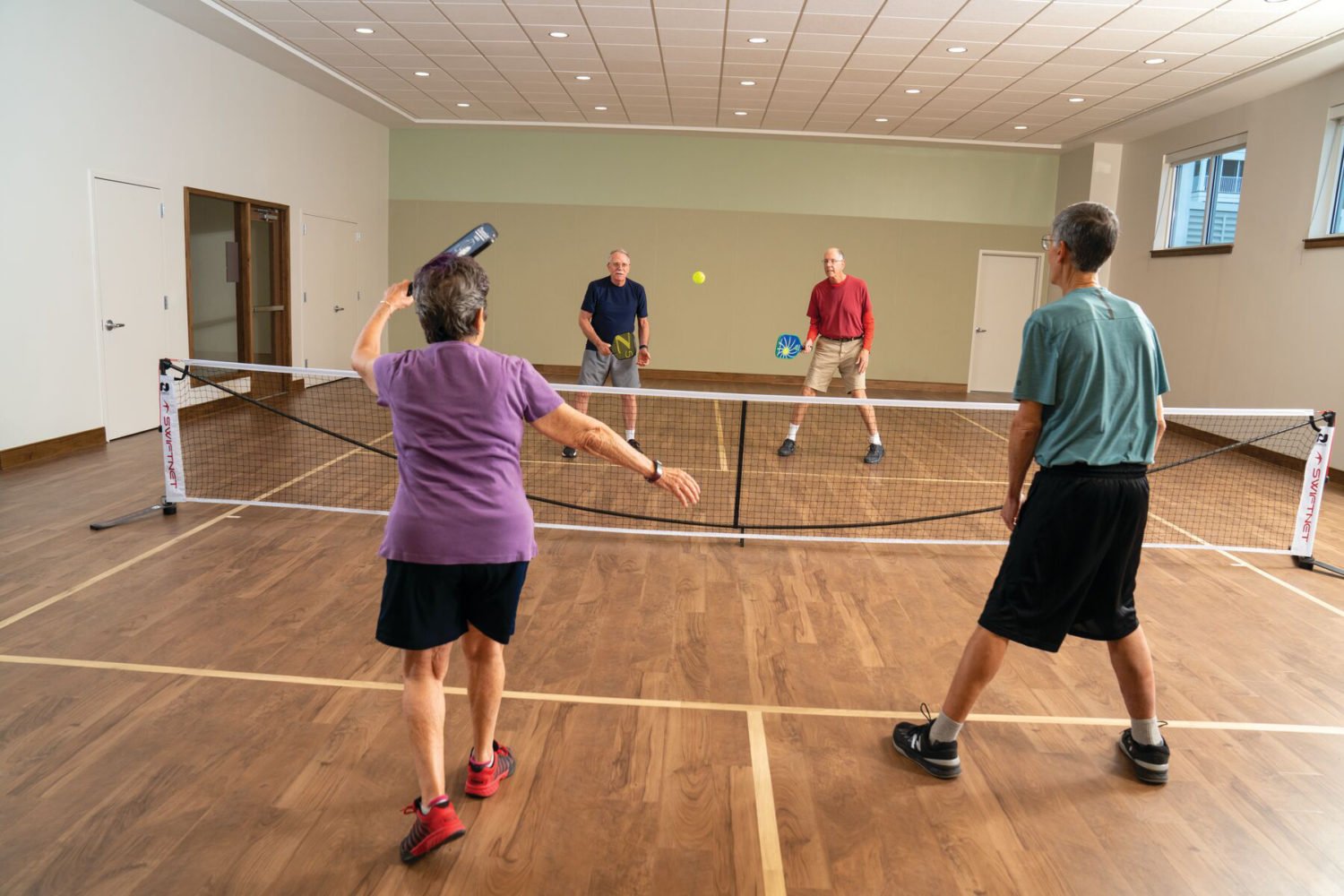The list of yoga’s benefits is long: It improves flexibility, provides a relaxing, meditative atmosphere, and helps release toxins from our bodies. So it’s no wonder it remains one of the most popular forms of spiritual and physical exercise for adults.
And now the practice is becoming popular with another group: babies and kids. Little yogis are joining parents at studios in droves, and various yoga competitions now include junior-league sections. However, some critics argue that practicing yoga too soon can be detrimental to a child’s body, especially in the case of infants. Still, by taking certain precautions, children can experience the same health benefits of yoga as their parents, including improved coordination and cognitive skills.
We spoke with yoga instructors Kelly DiNardo and Caitlin Van Hecke of Past Tense Studio, who offered tips parents should know before taking their child to a yoga class.
Safety precautions to take before signing up:
DiNardo recommends looking for smaller class sizes “so the teacher is better able to address individual needs.” Parents should also make sure to sign their child up for the appropriate age group and ability. In addition, avoid feeding your child a big snack right before class, since it can cause some embarrassing digestion issues during class.
Yoga risks and benefits:
Many physicians and major medical organizations, including the American Academy of Pediatrics, agree that while research is lacking, currently there is no problem with children practicing yoga, as long as it’s done in moderation. Simple poses that encourage stretching and relaxation are ideal, versus strenuous styles of yoga such as ashtanga or Bikram, which can overstrain children’s muscles and require participants to be in good physical condition.
In fact, a survey of pediatricians conducted by the American Academy of Pediatrics found that a majority recommend yoga as a form of exercise to treat asthma. Yoga is also a promising form of alternative therapy for autistic children.
How a typical kids’ yoga class works:
It depends on the age group, says DiNardo. For children ages five and under, teachers will usually lead a short class using a song or story that encourages kids to move. Parents are usually required to attend, so they can go through simple yoga poses with their child.
“They may race around and under Mom and Dad while she or he is in down dog, but they’re still learning what the pose is and what it looks like,” she explains. “Eventually, they will start to mimic them.”
Older children can typically last in an hour-long class that’s instructed in a more straightforward manner. A popular pose they’ll learn is the savasana, or corpse pose, says Van Hecke. It is the final resting pose, when everyone lies in silence or through guided meditation. “It’s amazing how responsive even the most rambunctious child can be to the pose.”
Caitlin Van Hecke will be leading two ten-week kids’ yoga programs at Past Tense Studio starting this Thursday and Friday. Van Hecke has been trained in teaching yoga for kids at Asheville Yoga Center and has led various kids’ yoga classes at camps and after-school centers. To sign up for the classes, visit Past Tense Studio’s website.













